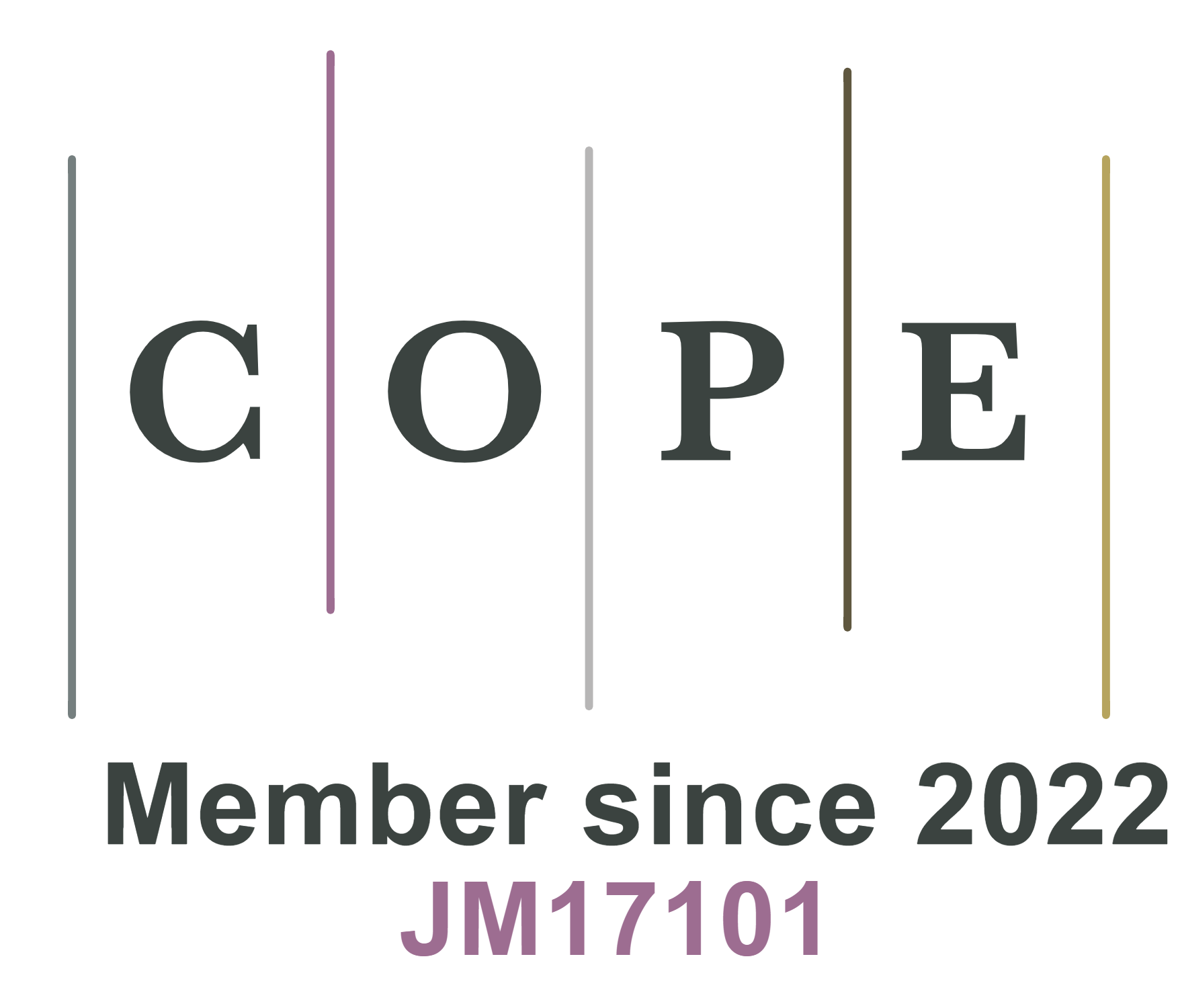REFERENCES
1. Jackson, R. B.; Saunois, M.; Bousquet, P.; et al. Increasing anthropogenic methane emissions arise equally from agricultural and fossil fuel sources. Environ. Res. Lett. 2020, 15, 071002.
2. Sudhaik, A.; Parwaz, K. A. A.; Raizada, P.; et al. Strategies based review on near-infrared light-driven bismuth nanocomposites for environmental pollutants degradation. Chemosphere 2022, 291, 132781.
3. Ullah, S.; Chishti, M. Z.; Majeed, M. T. The asymmetric effects of oil price changes on environmental pollution: evidence from the top ten carbon emitters. Environ. Sci. Pollut. Res. 2020, 27, 29623-35.
5. Dias, P.; Vilanova, A.; Lopes, T.; Andrade, L.; Mendes, A. Extremely stable bare hematite photoanode for solar water splitting. Nano. Energy. 2016, 23, 70-9.
6. Sivula, K.; Le, F. F.; Grätzel, M. Solar water splitting: progress using hematite (α-Fe2O3) photoelectrodes. ChemSusChem 2011, 4, 432-49.
7. Murphy, A.; Barnes, P.; Randeniya, L.; et al. Efficiency of solar water splitting using semiconductor electrodes. Int. J. Hydrogen. Energy. 2006, 31, 1999-2017.
8. Tamirat, A. G.; Rick, J.; Dubale, A. A.; Su, W. N.; Hwang, B. J. Using hematite for photoelectrochemical water splitting: a review of current progress and challenges. Nanoscale. Horiz. 2016, 1, 243-67.
9. Dias, P.; Andrade, L.; Mendes, A. Hematite-based photoelectrode for solar water splitting with very high photovoltage. Nano. Energy. 2017, 38, 218-31.
10. Formal F, Tétreault N, Cornuz M, Moehl T, Grätzel M, Sivula K. Passivating surface states on water splitting hematite photoanodes with alumina overlayers. Chem. Sci. 2011, 2, 737-43.
11. Ling, Y.; Wang, G.; Wheeler, D. A.; Zhang, J. Z.; Li, Y. Sn-doped hematite nanostructures for photoelectrochemical water splitting. Nano. Lett. 2011, 11, 2119-25.
12. Quitério, P.; Apolinário, A.; Navas, D.; et al. Photoelectrochemical water splitting: thermal annealing challenges on hematite nanowires. J. Phys. Chem. C. 2020, 124, 12897-911.
13. Zandi, O.; Hamann, T. W. Enhanced water splitting efficiency through selective surface state removal. J. Phys. Chem. Lett. 2014, 5, 1522-6.
14. Bassi, P. S.; Antony, R. P.; Boix, P. P.; Fang, Y.; Barber, J.; Wong, L. H. Crystalline Fe2O3/Fe2TiO5 heterojunction nanorods with efficient charge separation and hole injection as photoanode for solar water oxidation. Nano. Energy. 2016, 22, 310-8.
15. Zhou, D.; Fan, K. Recent strategies to enhance the efficiency of hematite photoanodes in photoelectrochemical water splitting. Chin. J. Catal. 2021, 42, 904-19.
16. Ni, S.; Wang, D.; Guo, F.; et al. Efficiency improvement of TiO2 nanowire arrays based dye-sensitized solar cells through further enhancing the specific surface area. J. Cryst. Growth. 2019, 505, 62-8.
17. Dhara, A.; Show, B.; Baral, A.; et al. Core-shell CuO-ZnO p-n heterojunction with high specific surface area for enhanced photoelectrochemical (PEC) energy conversion. Solar. Energy. 2016, 136, 327-32.
18. Haider, Z.; Yim, H. W.; Lee, H. W.; Kim, H. Surface and bulk modification for advanced electrode design in photoelectrochemical water splitting. Int. J. Hydrogen. Energy. 2020, 45, 5793-815.
19. Park, J.; Kang, J.; Chaule, S.; Jang, J. Recent progress and perspectives on heteroatom doping of hematite photoanodes for photoelectrochemical water splitting. J. Mater. Chem. A. 2023, 11, 24551-65.
20. Dias, P.; Lopes, T.; Andrade, L.; Mendes, A. Temperature effect on water splitting using a Si-doped hematite photoanode. J. Power. Sources. 2014, 272, 567-80.
21. Niu, S.; Jiang, W. J.; Wei, Z.; et al. Se-doping activates FeOOH for cost-effective and efficient electrochemical water oxidation. J. Am. Chem. Soc. 2019, 141, 7005-13.
22. Wang, J.; Xiang, Y.; Zhang, W.; et al. Integrating Cr doped FeOOH into FeSe2 nanoparticles for efficient water oxidation at large current densities. Fuel 2023, 351, 128827.
23. Lin, J.; Zhang, X.; Zhou, L.; Li, S.; Qin, G. Pt-doped α-Fe2O3 photoanodes prepared by a magnetron sputtering method for photoelectrochemical water splitting. Mater. Res. Bull. 2017, 91, 214-9.
24. Gurudayal; Chiam, S. Y.; Kumar, M. H.; et al. Improving the efficiency of hematite nanorods for photoelectrochemical water splitting by doping with manganese. ACS. Appl. Mater. Interfaces. 2014, 6, 5852-9.
25. Shen, S.; Jiang, J.; Guo, P.; Kronawitter, C. X.; Mao, S. S.; Guo, L. Effect of Cr doping on the photoelectrochemical performance of hematite nanorod photoanodes. Nano. Energy. 2012, 1, 732-41.
26. Liu, J.; Cai, Y.; Tian, Z.; et al. Highly oriented Ge-doped hematite nanosheet arrays for photoelectrochemical water oxidation. Nano. Energy. 2014, 9, 282-90.
27. Shen, S.; Kronawitter, C. X.; Jiang, J.; Mao, S. S.; Guo, L. Surface tuning for promoted charge transfer in hematite nanorod arrays as water-splitting photoanodes. Nano. Res. 2012, 5, 327-36.
28. Zhang, M.; Luo, W.; Li, Z.; Yu, T.; Zou, Z. Surface modification of hematite photoanode films with rhodium. Rare. Met. 2011, 30, 38-41.
29. Sivula, K.; Zboril, R.; Le, F. F.; et al. Photoelectrochemical water splitting with mesoporous hematite prepared by a solution-based colloidal approach. J. Am. Chem. Soc. 2010, 132, 7436-44.
30. Cesar, I.; Sivula, K.; Kay, A.; Zboril, R.; Grätzel, M. Influence of feature size, film thickness, and silicon doping on the performance of nanostructured hematite photoanodes for solar water splitting. J. Phys. Chem. C. 2009, 113, 772-82.
31. Malviya, K. D.; Dotan, H.; Shlenkevich, D.; Tsyganok, A.; Mor, H.; Rothschild, A. Systematic comparison of different dopants in thin film hematite (α-Fe2O3) photoanodes for solar water splitting. J. Mater. Chem. A. 2016, 4, 3091-9.
32. Zhang, Y.; Ji, H.; Ma, W.; Chen, C.; Song, W.; Zhao, J. Doping-promoted solar water oxidation on hematite photoanodes. Molecules 2016, 21, 868.
33. Quang, N. D.; Van, P. C.; Le, D. D.; et al. Fluorine-surface-modified tin-doped hematite nanorod array photoelectrodes with enhanced water oxidation activity. Appl. Surf. Sci. 2021, 558, 149898.
34. Quang N, Cao Van P, Majumder S, Jeong JR, Kim D, Kim C. Rational construction of S-doped FeOOH onto Fe2O3 nanorods for enhanced water oxidation. J. Colloid. Interface. Sci. 2022, 616, 749-58.
35. Barroso, M.; Mesa, C. A.; Pendlebury, S. R.; et al. Dynamics of photogenerated holes in surface modified α-Fe2O3 photoanodes for solar water splitting. Proc. Natl. Acad. Sci. U. S. A. 2012, 109, 15640-5.
36. Kim, J. H.; Kim, J. M.; Pan, Z.; Sohn, W. Y. Revealing the roles of surface treatments on hematite (α-Fe2O3) photoanode in the shift of the onset potential. J. Photochem. Photobiol. A. Chem. 2023, 445, 115037.
37. Franking, R.; Li, L.; Lukowski, M. A.; et al. Facile post-growth doping of nanostructured hematite photoanodes for enhanced photoelectrochemical water oxidation. Energy. Environ. Sci. 2013, 6, 500-12.
38. Pu, A.; Deng, J.; Li, M.; et al. Coupling Ti-doping and oxygen vacancies in hematite nanostructures for solar water oxidation with high efficiency. J. Mater. Chem. A. 2014, 2, 2491.
39. Su, J.; Zhou, J.; Zong, S.; Zhou, Z.; Liu, C.; Feng, B. The effect of thermal annealing on the interfacial properties and photoelectrochemical performance of Ti doped Fe2O3 nanowire arrays. RSC. Adv. 2016, 6, 99851-8.
40. Peng, Y.; Ruan, Q.; Lam, C. H.; et al. Plasma-implanted Ti-doped hematite photoanodes with enhanced photoelectrochemical water oxidation performance. J. Alloys. Compd. 2021, 870, 159376.
41. Shen, S.; Kronawitter, C. X.; Wheeler, D. A.; et al. Physical and photoelectrochemical characterization of Ti-doped hematite photoanodes prepared by solution growth. J. Mater. Chem. A. 2013, 1, 14498.
42. Zhang, P.; Kleiman-shwarsctein, A.; Hu, Y.; et al. Oriented Ti doped hematite thin film as active photoanodes synthesized by facile APCVD. Energy. Environ. Sci. 2011, 4, 1020.
43. Ling, Y.; Li, Y. Review of Sn-doped hematite nanostructures for photoelectrochemical water splitting. Part. Part. Syst. Charact. 2014, 31, 1113-21.
44. Vayssieres, L.; Beermann, N.; Lindquist, S.; Hagfeldt, A. Controlled aqueous chemical growth of oriented three-dimensional crystalline nanorod arrays: application to iron(III) oxides. Chem. Mater. 2001, 13, 233-5.
45. Francisco, F.; Dias, P.; Ivanou, D.; Santos, F.; Azevedo, J.; Mendes, A. Synthesis of Host-guest hematite photoelectrodes for solar water splitting. ChemNanoMat 2019, 5, 911-20.
46. Yang, T.; Kang, H.; Jin, K.; et al. An iron oxide photoanode with hierarchical nanostructure for efficient water oxidation. J. Mater. Chem. A. 2014, 2, 2297-305.
47. Schneider, C. A.; Rasband, W. S.; Eliceiri, K. W. NIH image to imageJ: 25 years of image analysis. Nat. Methods. 2012, 9, 671-5.
48. Seah, M. P.; Dench, W. A. Quantitative electron spectroscopy of surfaces: a standard data base for electron inelastic mean free paths in solids. Surf. Interface. Anal. 1979, 1, 2-11.
49. Redondo-cubero, A.; Borge, M. J. G.; Gordillo, N.; et al. Current status and future developments of the ion beam facility at the centre of micro-analysis of materials in Madrid. Eur. Phys. J. Plus. 2021, 136, 1085.
50. Mayer, M. SIMNRA, a simulation program for the analysis of NRA, RBS and ERDA. In: The fifteenth international conference on the application of accelerators in research and industry; Denton, Texas (USA): AIP; 1999. pp. 541-4. Available from: https://pubs.aip.org/aip/acp/article/475/1/541-544/953322. [Last accessed on 21 Mar 2025].
51. Lopes, T.; Andrade, L.; Le, F. F.; Gratzel, M.; Sivula, K.; Mendes, A. Hematite photoelectrodes for water splitting: evaluation of the role of film thickness by impedance spectroscopy. Phys. Chem. Chem. Phys. 2014, 16, 16515-23.
52. Dare-edwards, M. P.; Goodenough, J. B.; Hamnett, A.; Trevellick, P. R. Electrochemistry and photoelectrochemistry of iron(III) oxide. J. Chem. Soc,. Faraday. Trans. 1. 1983, 79, 2027.
53. Ahn, H.; Kwak, M.; Lee, J.; Yoon, K.; Jang, J. Nanoporous hematite structures to overcome short diffusion lengths in water splitting. J. Mater. Chem. A. 2014, 2, 19999-20003.
54. Dotan, H.; Mathews, N.; Hisatomi, T.; Grätzel, M.; Rothschild, A. On the solar to hydrogen conversion efficiency of photoelectrodes for water splitting. J. Phys. Chem. Lett. 2014, 5, 3330-4.
55. Dotan, H.; Sivula, K.; Grätzel, M.; Rothschild, A.; Warren, S. C. Probing the photoelectrochemical properties of hematite (α-Fe2O3 ) electrodes using hydrogen peroxide as a hole scavenger. Energy. Environ. Sci. 2011, 4, 958-64.
56. Morrish, R.; Rahman, M.; MacElroy, J. M.; Wolden, C. A. Activation of hematite nanorod arrays for photoelectrochemical water splitting. ChemSusChem 2011, 4, 474-9.
57. Zhao, X.; Feng, J.; Wang, N.; et al. The Influence of Ti doping on morphology and photoelectrochemical properties of hematite grown from aqueous solution for water splitting. Energy. Tech. 2018, 6, 2188-99.
58. Mazzaro, R.; Boscolo, B. S.; Natali, M.; et al. Hematite nanostructures: an old material for a new story. Simultaneous photoelectrochemical oxidation of benzylamine and hydrogen production through Ti doping. Nano. Energy. 2019, 61, 36-46.
59. Deng, J.; Zhong, J.; Pu, A.; et al. Ti-doped hematite nanostructures for solar water splitting with high efficiency. J. Appl. Phys. 2012, 112, 084312.
60. Li, L.; Zhang, H.; Liu, C.; Liang, P.; Mitsuzaki, N.; Chen, Z. The effect of annealing regime and electrodeposition time on morphology and photoelecrochemical performance of hematite converted from nanosheet γ-FeOOH. J. Photochem. Photobiol. A. Chem. 2019, 369, 8-15.
61. Kay, A.; Cesar, I.; Grätzel, M. New benchmark for water photooxidation by nanostructured alpha-Fe2O3 films. J. Am. Chem. Soc. 2006, 128, 15714-21.
62. Iordanova, N.; Dupuis, M.; Rosso, K. M. Charge transport in metal oxides: a theoretical study of hematite alpha-Fe2O3. J. Chem. Phys. 2005, 122, 144305.
63. Zhang, H.; He, Y.; Bao, X.; et al. Fabrication of hematite photoanode consisting of (110)-oriented single crystals. ChemSusChem 2023, 16, e202300666.
64. Suryanarayana, C.; Norton, M. G. X-ray diffraction. 1th ed. Boston, MA: Springer US; 1998. Available from: http://link.springer.com/10.1007/978-1-4899-0148-4. [Last accessed on 21 Mar 2025].
65. Williamson, G.; Hall, W. X-ray line broadening from filed aluminium and wolfram. Acta. Metall. 1953, 1, 22-31.
66. Maabong, K.; Machatine, A. G.; Mwankemwa, B. S.; et al. Nanostructured hematite thin films for photoelectrochemical water splitting. Physica. B. 2018, 535, 67-71.
67. Apolinário, A.; Lopes, T.; Costa, C.; Araújo, J. P.; Mendes, A. M. Multilayered WO3 nanoplatelets for efficient photoelectrochemical water splitting: the role of the annealing ramp. ACS. Appl. Energy. Mater. 2019, 2, 1040-50.
68. Oliveira, G.; Machado, P.; Pires, A.; Pereira, A.; Araújo, J.; Lopes, A. Magnetocaloric effect and refrigerant capacity in polycrystalline YCrO3. J. Phys. Chem. Solids. 2016, 91, 182-8.
69. Proenca, M. P.; Sousa, C. T.; Pereira, A. M.; et al. Size and surface effects on the magnetic properties of NiO nanoparticles. Phys. Chem. Chem. Phys. 2011, 13, 9561-7.
70. Shannon, R. D. Revised effective ionic radii and systematic studies of interatomic distances in halides and chalcogenides. Acta. Cryst. A. 1976, 32, 751-67.
71. Bhandary, N.; Singh, A. P.; Ingole, P. P.; Basu, S. Enhanced photoelectrochemical performance of electrodeposited hematite films decorated with nanostructured NiMnOx. RSC. Adv. 2016, 6, 35239-47.
72. Zhang, X.; Niu, Y.; Meng, X.; Li, Y.; Zhao, J. Structural evolution and characteristics of the phase transformations between α-Fe2O3, Fe3O4 and γ-Fe2O3 nanoparticles under reducing and oxidizing atmospheres. CrystEngComm 2013, 15, 8166.
73. Sarma, S. K.; Mohan, R.; Shukla, A. Structural, opto-electronic and photoelectrochemical properties of tin doped hematite nanoparticles for water splitting. Mater. Sci. Semicond. Process. 2020, 108, 104873.
74. Shirley, D. A. High-resolution X-ray photoemission spectrum of the valence bands of gold. Phys. Rev. B. 1972, 5, 4709-14.
75. Zhang, J.; Liu, X.; Wang, L.; et al. Synthesis and gas sensing properties of α-Fe2O3@ZnO core-shell nanospindles. Nanotechnology 2011, 22, 185501.
76. Fu, Y.; Wang, R.; Xu, J.; et al. Synthesis of large arrays of aligned α-Fe2O3 nanowires. Chem. Phys. Lett. 2003, 379, 373-9.
77. Kang, M. J.; Yu, H.; Lee, W.; Cha, H. G. Efficient Fe2O3/C-g-C3N4 Z-scheme heterojunction photocatalyst prepared by facile one-step carbonizing process. J. Phys. Chem. Solids. 2019, 130, 93-9.
78. Biesinger, M. C. Accessing the robustness of adventitious carbon for charge referencing (correction) purposes in XPS analysis: Insights from a multi-user facility data review. Appl. Surf. Sci. 2022, 597, 153681.
79. Grosvenor, A. P.; Kobe, B. A.; Biesinger, M. C.; Mcintyre, N. S. Investigation of multiplet splitting of Fe 2p XPS spectra and bonding in iron compounds. Surf. Interface. Anal. 2004, 36, 1564-74.
80. Hao, S.; Wang, H.; Yang, R.; et al. Corn-like mesoporous SnO2/α-Fe2O3 heterostructure for superior TEA sensing performance. Appl. Phys. A. 2021, 127, 4350.
81. Sun, L.; Wu, W.; Yang, S.; et al. Template and silica interlayer tailorable synthesis of spindle-like multilayer α-Fe2O3/Ag/SnO2 ternary hybrid architectures and their enhanced photocatalytic activity. ACS. Appl. Mater. Interfaces. 2014, 6, 1113-24.
82. Biesinger, M. C.; Payne, B. P.; Grosvenor, A. P.; Lau, L. W.; Gerson, A. R.; Smart, R. S. Resolving surface chemical states in XPS analysis of first row transition metals, oxides and hydroxides: Cr, Mn, Fe, Co and Ni. Appl. Surf. Sci. 2011, 257, 2717-30.
83. Payne, B.; Biesinger, M.; Mcintyre, N. X-ray photoelectron spectroscopy studies of reactions on chromium metal and chromium oxide surfaces. J. Electron. Spectrosc. Relat. Phenom. 2011, 184, 29-37.
84. Wang, L.; Nguyen, N. T.; Zhang, Y.; Bi, Y.; Schmuki, P. Enhanced solar water splitting by swift charge separation in Au/FeOOH sandwiched single-crystalline Fe2O3 nanoflake photoelectrodes. ChemSusChem 2017, 10, 2720-7.
85. Tian, C. M.; Li, W.; Lin, Y. M.; et al. Electronic structure, optical properties, and photoelectrochemical activity of Sn-doped Fe2O3 thin films. J. Phys. Chem. C. 2020, 124, 12548-58.
86. Wang, J.; Perry, N. H.; Guo, L.; Vayssieres, L.; Tuller, H. L. On the theoretical and experimental control of defect chemistry and electrical and photoelectrochemical properties of hematite nanostructures. ACS. Appl. Mater. Interfaces. 2019, 11, 2031-41.
87. Ye, F.; Zhao, B.; Ran, R.; Shao, Z. Facile mechanochemical synthesis of nano SnO2/graphene composite from coarse metallic Sn and graphite oxide: an outstanding anode material for lithium-ion batteries. Chem. Eur. J. 2014, 20, 4055-63.
88. Mancipe, S.; Martínez, J. J.; Pinzón, C.; Rojas, H.; Solis, D.; Gómez, R. Effective photocatalytic degradation of Rhodamine B using tin semiconductors over hydrotalcite-type materials under sunlight driven. Catal. Today. 2021, 372, 191-7.
89. Baggetto, L.; Ganesh, P.; Meisner, R. P.; et al. Characterization of sodium ion electrochemical reaction with tin anodes: experiment and theory. J. Power. Sources. 2013, 234, 48-59.
90. Lee, M. H.; Park, J. H.; Han, H. S.; et al. Nanostructured Ti-doped hematite (α-Fe2O3) photoanodes for efficient photoelectrochemical water oxidation. Int. J. Hydrogen. Energy. 2014, 39, 17501-7.
91. Chae, S. Y.; Rahman, G.; Joo, O. Elucidation of the structural and charge separation properties of titanium-doped hematite films deposited by electrospray method for photoelectrochemical water oxidation. Electrochim. Acta. 2019, 297, 784-93.
92. Lian, X.; Yang, X.; Liu, S.; et al. Enhanced photoelectrochemical performance of Ti-doped hematite thin films prepared by the sol-gel method. App. Surf. Sci. 2012, 258, 2307-11.
93. Niu, Y.; Zhou, Y.; Niu, P.; Shen, H.; Ma, Y. Effects of Ti doping on hematite photoanodes: more surface states. J. Nanosci. Nanotechnol. 2019, 19, 3437-46.
94. Barradas, N. P. Rutherford backscattering analysis of thin films and superlattices with roughness. J. Phys. D. Appl. Phys. 2001, 34, 2109-16.
95. Barradas, N. P.; García, N. C.; Redondo-cubero, A.; Shen, G.; Kung, P.; Pau, J. Analytical simulation of RBS spectra of nanowire samples. Nucl. Instrum. Methods. Phys. Res. B. 2016, 371, 116-20.
96. Klahr, B.; Gimenez, S.; Fabregat-Santiago, F.; Hamann, T.; Bisquert, J. Water oxidation at hematite photoelectrodes: the role of surface states. J. Am. Chem. Soc. 2012, 134, 4294-302.
97. Jrad, F.; Naceur, J. B.; Ouertani, R.; Chtourou, R. Photo-electrochemical impedance spectroscopy analysis of hydrothermally synthesized β-In2S3 thin film photo-anodes. Physica. E. 2019, 114, 113585.
98. Katsuki, T.; Zahran, Z. N.; Tanaka, K.; et al. Facile fabrication of a highly crystalline and well-interconnected hematite nanoparticle photoanode for efficient visible-light-driven water oxidation. ACS. Appl. Mater. Interfaces. 2021, 13, 39282-90.
99. Peerakiatkhajohn, P.; Yun, J. H.; Chen, H.; Lyu, M.; Butburee, T.; Wang, L. Stable hematite nanosheet photoanodes for enhanced photoelectrochemical water splitting. Adv. Mater. 2016, 28, 6405-10.
100. Liu, G.; Karuturi, S. K.; Chen, H.; et al. Tuning the morphology and structure of disordered hematite photoanodes for improved water oxidation: a physical and chemical synergistic approach. Nano. Energy. 2018, 53, 745-52.
101. Qin, D.; Li, Y.; Wang, T.; et al. Sn-doped hematite films as photoanodes for efficient photoelectrochemical water oxidation. J. Mater. Chem. A. 2015, 3, 6751-5.
102. Bak, A.; Choi, W.; Park, H. Enhancing the photoelectrochemical performance of hematite (α-Fe2O3) electrodes by cadmium incorporation. Appl. Catal. B. Environ. 2011, 110, 207-15.
103. Jha, B. K.; Chaule, S.; Jang, J. Enhancing photocatalytic efficiency with hematite photoanodes: principles, properties, and strategies for surface, bulk, and interface charge transfer improvement. Mater. Chem. Front. 2024, 8, 2197-226.
104. Yoon, K.; Park, J.; Lee, H.; et al. Unveiling the role of the ti dopant and viable Si doping of hematite for practically efficient solar water splitting. ACS. Catal. 2022, 12, 5112-22.
105. Liu, H.; Fan, X.; Li, Y.; Guo, H.; Jiang, W.; Liu, G. Hematite-based photoanodes for photoelectrochemical water splitting: performance, understanding, and possibilities. J. Environ. Chem. Eng. 2023, 11, 109224.
106. Jeon, T. H.; Moon, G.; Park, H.; Choi, W. Ultra-efficient and durable photoelectrochemical water oxidation using elaborately designed hematite nanorod arrays. Nano. Energy. 2017, 39, 211-8.
107. Iandolo, B.; Zhang, H.; Wickman, B.; Zorić, I.; Conibeer, G.; Hellman, A. Correlating flat band and onset potentials for solar water splitting on model hematite photoanodes. RSC. Adv. 2015, 5, 61021-30.
108. Toroker, M. C. Theoretical insights into the mechanism of water oxidation on nonstoichiometric and titanium-doped Fe2O3(0001). J. Phys. Chem. C. 2014, 118, 23162-7.
109. Kamimura, J.; Bogdanoff, P.; Abdi, F. F.; et al. Photoelectrochemical properties of GaN photoanodes with cobalt phosphate catalyst for solar water splitting in neutral electrolyte. J. Phys. Chem. C. 2017, 121, 12540-5.
110. Bartesaghi, D.; Pérez, I. C.; Kniepert, J.; et al. Competition between recombination and extraction of free charges determines the fill factor of organic solar cells. Nat. Commun. 2015, 6, 7083.
111. Dias, P.; Lopes, T.; Meda, L.; Andrade, L.; Mendes, A. Photoelectrochemical water splitting using WO3 photoanodes: the substrate and temperature roles. Phys. Chem. Chem. Phys. 2016, 18, 5232-43.
112. Krol, R.; Grätzel, M. Photoelectrochemical hydrogen production. 1th ed. New York: Springer; 2012. Available from: https://link.springer.com/book/10.1007/978-1-4614-1380-6. [Last accessed on 21 Mar 2025].
113. Yu, Q.; Meng, X.; Wang, T.; Li, P.; Ye, J. Hematite films decorated with nanostructured ferric oxyhydroxide as photoanodes for efficient and stable photoelectrochemical water splitting. Adv. Funct. Materials. 2015, 25, 2686-92.
114. Li, C.; Li, A.; Luo, Z.; et al. Surviving high-temperature calcination: ZrO2-induced hematite nanotubes for photoelectrochemical water oxidation. Angew. Chem. Int. Ed. 2017, 56, 4150-5.









